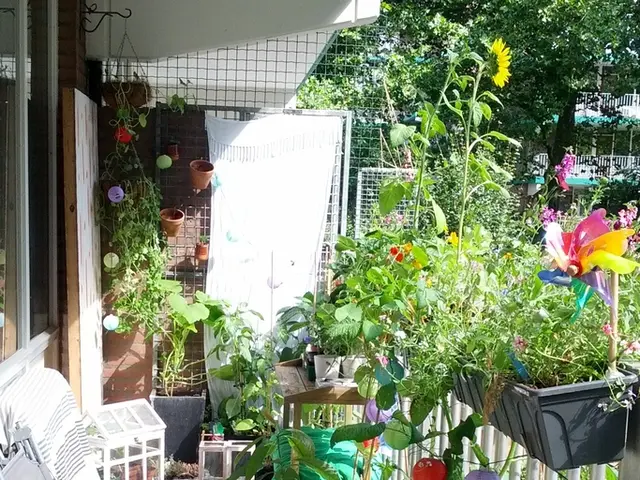Overcoming Adversity in Agriculture: Growing Plants in Difficult Terrain
In the world of gardening and farming, the health of the soil is paramount to the success of any plant life. Each soil type presents its own unique challenges and opportunities, and understanding how to amend them can lead to a thriving garden or farm. Here's a guide to the best soil amendments for some common soil types and their effects on plant growth.
Sandy Soil
Sandy soils, known for their fast drainage and low nutrient-holding capacity, can benefit from amendments like peat moss or compost. These additions help improve water retention and nutrient-holding capacity, allowing plants to access moisture and nutrients more consistently.
Clay Soil
Clay soils, with their dense particles, can benefit from organic matter such as sweet peat or bark soil conditioner. These amendments improve soil structure by breaking up the dense particles, increasing aeration, drainage, and nutrient availability. This promotes healthier root growth and nutrient uptake.
Silt Soil
Silt soils, which hold moisture well but can compact easily, can benefit from organic amendments like compost. These additions improve aeration and supply nutrients, encouraging robust plant growth. Silt is part of loam mixtures that respond well to balanced amendments.
Chalky Soil (Alkaline)
Typically high pH soils benefit from adding acidifying amendments such as elemental sulfur or peat moss to lower pH, increase nutrient availability, and enhance microbial activity. This prevents nutrient lockout and supports plant health.
Peat Soil
Peat soils, naturally acidic and high in organic matter, often require lime (calcium carbonate or dolomitic lime) to neutralize excess acidity and supply calcium and magnesium, improving fertility and reducing aluminum toxicity risk.
Loam Soil
Loams, naturally fertile, can benefit from adding organic matter like homemade compost or light peat to boost nutrient content and moisture retention, further enhancing plant growth and soil health.
In addition to these amendments, implementing conservation practices such as cover cropping, contour cropping, and vegetated buffer strips can help reduce soil erosion in silty soils. Leaving a rougher seedbed and increasing surface organic matter in silty soils can also mitigate erosion.
To prevent compaction, it is crucial to avoid working silty soils during wet weather and to maintain organic matter content above 3%. To improve chalky soils for gardening, it is essential to add organic matter to help improve moisture retention and humus levels. Younger, smaller plants tend to establish more quickly and easily in chalky soils than larger, more mature specimens. Adding mulch around plant crowns can help retain moisture in chalky soils.
However, it's important to note that peatlands are sensitive ecosystems that can easily become sources of greenhouse gas emissions. Approximately 15% of global peatlands have been drained for farming, forestry, and extractive industries, and these degraded peatlands contribute to global carbon emissions. Harvesting peat moss destroys peatlands and contributes to climate change by releasing stored carbon. For this reason, the use of peat moss as a soil amendment is being phased out in some places.
Instead, gardeners and farmers can opt for more environmentally friendly alternatives such as compost, organic mulch, or coco coir. These options provide the necessary nutrients and moisture retention without the environmental impact associated with peat moss extraction.
In conclusion, the choice of amendment depends on the existing soil texture and pH, with the goal of optimizing nutrient availability, soil structure, and moisture dynamics to support plant growth effectively. By understanding the unique properties of each soil type and choosing appropriate amendments, gardeners and farmers can create a thriving environment for their plants.
- Incorporating organic matter such as compost can improve the nutrient content and moisture retention of loam soils, creating an environment that encourages robust plant growth.
- To mitigate the risk of climate change, gardeners and farmers are encouraged to replace peat moss with more environmentally friendly soil amendments, like compost, organic mulch, or coco coir, which provide similar benefits without the destruction of peatlands.
- In addition to using appropriate soil amendments, practicing sustainable farming techniques, like cover cropping and maintaining a high organic matter content, can contribute to a healthier environment by reducing soil erosion and mitigating the effects of climate change.




